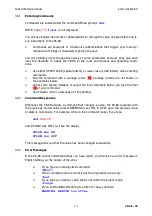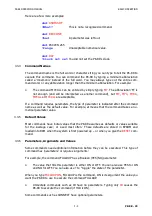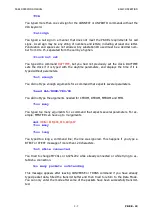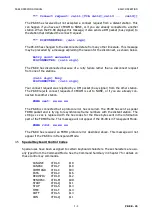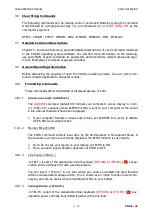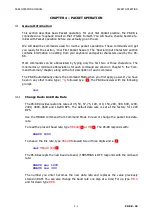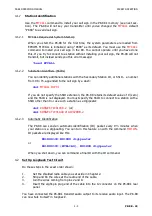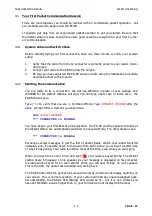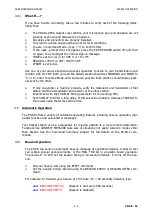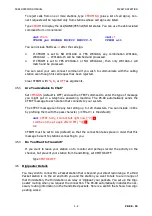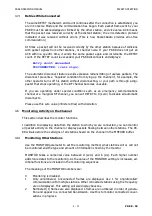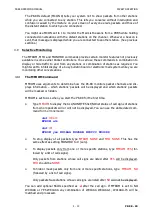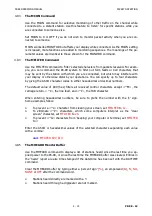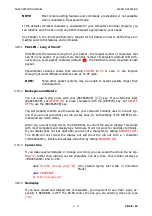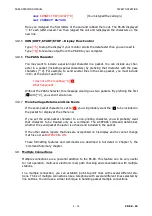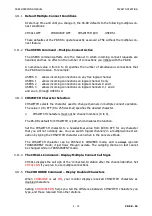
PK-88 OPERATING MANUAL
PACKET OPERATION
4 - 4
PK-88 - 51
4.3.2
Send Packet Character
[
↵
]
tells the PK-88 to assemble your typed characters in a packet and transmit them. (We
will explain how to use a different character to send packets in Chapter 5, the 'Command
Summary' chapter.) In the Converse Mode, everything you type is assembled into packets
and sent to the station to which you are connected. If a connect does not exist, the pack-
et is addressed to CQ or whatever address you have typed into the UNPROTO field.
4.3.3
Return to Command Mode
The PK-88 automatically enters Converse Mode when the connection is established. Type
[^C]
(or whatever character you previously set ($00-$7F)) to return to Command Mode.
The PK-88 does not echo the <CTRL-C>, but you should immediately see the Command
Mode
cmd:
prompt.
You can return to Command Mode with the
[BREAK]
key. BREAK is a break in transmission
(not an ASCII character) - your keyboard may have it.
If <CTRL-C> interferes with or stops your terminal program and you cannot send the
BREAK signal, change the character that returns you to Command Mode. See 'COMMAND'
in Chapter 5, the 'Command Summary'.
4.3.4
Return to Converse Mode
Type
CONVERSE
to return to Converse Mode.
[^C]
cmd:
CONVERSE
Whatever I type in Converse Mode is transmitted.
Whatever I type in Converse Mode is transmitted.
[^C]
cmd:
4.3.5
Terminate the Link – Disconnect
Type
DISCONNE
(or
D
) to terminate the link or connection. The PK-88 transmits a special
packet that ends the contact and notifies you when the link is disconnected:
cmd:
DISCONNE
*** DISCONNECTED: {call sign}
An actual communication may be terminated by the other station. In that case, you will
see the
*** DISCONNECTED: {call sign}
message without having typed the
command at your station.
You have now accomplished the basic operations of a packet contact:
o
You connected to the desired station to begin the contact.
o
You sent and received messages.
o
You disconnected from the station at the end of the contact.


